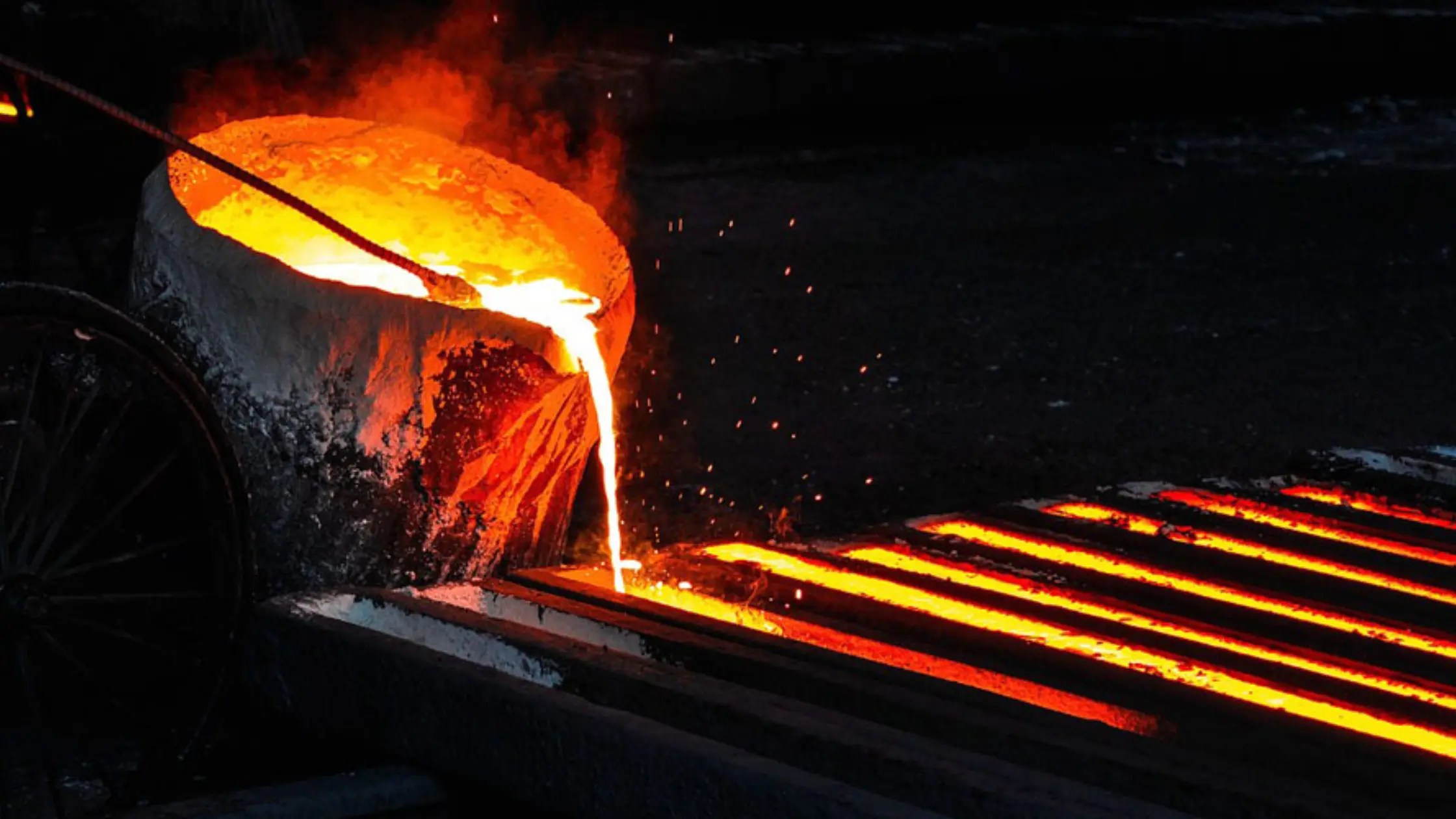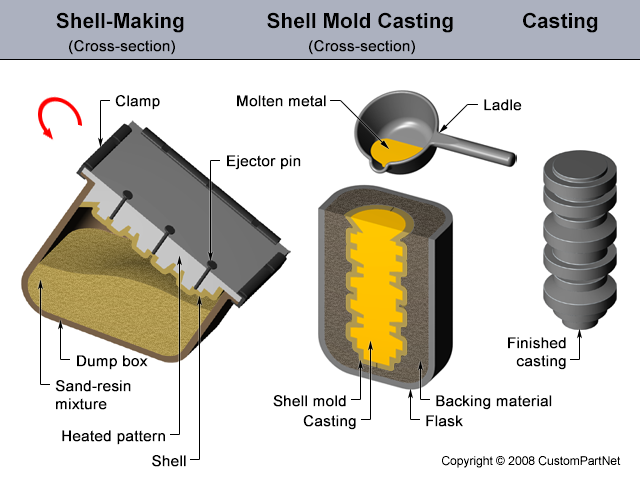Exploring how Aluminum Foundry methods improve consistency across industries
Wiki Article
Understanding the Steel Castings Process: A Comprehensive Overview for Beginners
The Metal Casting procedure is an essential strategy in producing that changes molten steel right into strong kinds. Beginners need to realize the different approaches involved, such as sand spreading and pass away casting. Understanding the products, layout concepts, and precaution is equally crucial. Each facet plays an essential role in attaining successful results. As one navigates these details, the concern of how to enhance each step for enhanced results becomes increasingly essential.The Essentials of Steel Casting
Although Metal Casting has actually developed over centuries, its fundamental concepts stay regular and important to the production process. At its core, Metal Casting entails the improvement of liquified steel right into strong objects with different methods. The procedure begins with the development of a mold, which specifies the shape of the last item. As soon as the mold and mildew is prepared, steel is warmed to its melting factor and put right into the dental caries. After cooling down, the steel solidifies, taking the shape of the mold.There are several casting techniques, including sand spreading, financial investment casting, and die spreading, each with distinct benefits and applications. The option of technique relies on variables such as production quantity, product kind, and wanted precision. Once cast, the final product might go through extra processes like machining or surface area therapy to attain the called for finish and specs. Comprehending these basics is essential for any person thinking about the field of Metal Casting.

Comprehending Products Used in Metal Casting
Materials play a crucial function in the Metal Casting process, affecting the end product's homes and efficiency. Different steels are made use of, consisting of aluminum, steel, iron, and bronze, each offering unique features matched for certain applications. Aluminum is corrosion-resistant and lightweight, making it ideal for vehicle components. Iron, especially cast iron, is favored for its excellent wear resistance and durability. Steel offers high strength and adaptability, commonly used in hefty equipment components. Bronze, known for its deterioration resistance and machinability, is generally used in aquatic applications.In addition to the metals, various casting products, such as sand, plaster, and ceramic, are used to create molds. Sand spreading, the most prevalent technique, utilizes silica sand due to its thermal stability and capacity to form elaborate shapes. Plaster and ceramic mold and mildews supply finer details yet may require even more intricate processes. The choice of products straight impacts the performance, price, and high quality of the casting operation.
The Layout Process: From Concept to Blueprint
The style process in Metal Casting begins with the initial concept development, where concepts are produced and assessed. This is adhered to by the application of CAD modeling methods, allowing for exact visualizations of the layout. Lastly, the plan completion steps ensure that all specifications are accurately documented for manufacturing.Initial Concept Development
Preliminary idea advancement marks an important phase in the Metal Casting procedure, where concepts change right into substantial styles. During this stage, developers collaborate with stakeholders and engineers to brainstorm and improve preliminary concepts. They consider aspects such as capability, aesthetics, and manufacturability, ensuring that the design satisfies the needed specifications and efficiency standards. Sketches and harsh drafts are developed to envision the concepts, allowing for initial evaluations of expediency and cost-effectiveness. This stage also entails recognizing materials and potential spreading techniques that line up with the style goals. Eventually, initial idea growth lays the groundwork for a complete blueprint, guiding the subsequent stages of the spreading process and making sure an effective change from principle to truth.CAD Modeling Techniques
Transforming principles right into accurate layouts, CAD modeling methods play a critical role in the Metal Casting procedure. These strategies make use of advanced software program to create thorough three-dimensional models that precisely mirror the intended item. By using tools such as parametric modeling, strong modeling, and surface area modeling, developers can adjust measurements and shapes with ease. CAD systems also promote simulation and evaluation, enabling the recognition of prospective flaws before production begins. This proactive method reduces material waste and enhances the design for manufacturability. In addition, CAD versions can be easily customized, enabling fast versions based upon feedback. Fundamentally, CAD modeling offers as the foundation of the style process, connecting the void between first ideas and the eventual production-ready layouts.Plan Completion Steps
Complying with the production of comprehensive CAD designs, the next phase involves blueprint finalization, which is essential in converting digital styles right into workable strategies for production. This procedure begins with evaluating the CAD designs for accuracy and compliance with specs. As soon as validated, the measurements, resistances, and product specs are thoroughly outlined to assure clarity. Incorporating annotations and notes helps connect essential details regarding spreading procedures, surface area coatings, and assembly needs. The wrapped up plan undergoes an extensive authorization process, often including cooperation with designers and manufacturing groups to resolve any kind of possible concerns. Alterations are made and approvals gotten, the blueprint is formally released, offering as the foundational file for the succeeding phases of Metal Casting, consisting of pattern production and mold style.The Metal Casting Strategies Explained

Metal Casting methods include a selection of approaches utilized to form liquified metal right into wanted kinds. These strategies vary according to the type of product, complexity of the layout, and manufacturing quantity. Sand casting is one of one of the most usual techniques, entailing the development of a mold from sand to hold the liquified metal. Financial investment casting, or lost-wax spreading, enables detailed layouts by utilizing a wax pattern that is thawed away. Pass away casting employs high-pressure shot of liquified steel right into a mold, suitable for mass production. Other techniques consist of long-term mold casting, which utilizes multiple-use molds, and centrifugal spreading, where rotational pressures aid in loading the mold. Each technique has its applications and advantages, making it important for manufacturers to choose the suitable technique based upon their specific needs and demands. Comprehending these techniques is vital for any individual entailed in the Metal Casting process.
Completing Procedures: Enhancing Your Casted Item

Finishing procedures play an important role in improving the high quality and look of casted products. Numerous surface therapy techniques, such as sprucing up and finishing, are utilized to enhance durability and aesthetic appeals. Furthermore, quality evaluation techniques assure that the final item satisfies specified criteria and efficiency needs.
Surface Area Therapy Methods
A selection of surface area treatment strategies play a necessary function in improving the high quality and long life of casted products. These strategies consist of methods such as shot blasting, brightening, and coating. Shot blowing up efficiently gets rid of surface flaws, improving the visual and functional qualities of the casting. Polishing supplies a smooth coating, which is especially crucial for decorative applications and parts calling for very little friction. Layer methods, such as electroplating or powder finish, offer additional defense against corrosion and wear, ensuring longevity. Surface therapies can enhance bond for succeeding procedures, such as paint or bonding. By utilizing these methods, producers can achieve premium surface top quality, which is vital for the efficiency and life expectancy of Metal Casting in different applications.Top Quality Assessment Techniques
Effective top quality examination techniques are vital for assuring the integrity and performance of casted items after the finishing processes. Various strategies are used to evaluate the high quality find more info of Metal Casting, consisting of visual evaluation, dimensional checks, and non-destructive testing (NDT) Aesthetic examination enables the identification of surface flaws, while dimensional checks assure that products meet specified resistances. NDT approaches, such as ultrasonic testing and radiographic inspection, supply much deeper insights right into inner integrity without damaging the castings. In addition, mechanical screening, such as tensile and firmness examinations, evaluates material residential or commercial properties - Aluminum Castings. By employing a combination of these approaches, makers can boost item high quality and reliability, inevitably resulting in greater client contentment and decreased manufacturing pricesSecurity Considerations in Metal Casting
While the Metal Casting process offers many advantages, it likewise provides a variety of safety and security dangers that have to be meticulously handled. Employees in casting facilities are exposed to heats, liquified metals, and dangerous materials, which can lead to severe injuries if appropriate safety measures are not taken. Individual protective devices (PPE) such as heat-resistant gloves, encounter guards, and safety apparel is essential to minimize dangers.Furthermore, the existence of fumes and dirt demands proper air flow systems to assure air quality - Aluminum Castings. Regular training on safety methods is important for all workers to recognize possible risks and respond successfully. Emergency situation over at this website procedures must be developed, consisting of fire precaution and first help schedule. Maintenance of tools and proper handling of materials even more contribute to a much safer working setting. By focusing on these safety and security considerations, Metal Casting operations can protect their labor force and maintain efficient manufacturing processes
Regularly Asked Questions
What Are the Ecological Influences of Metal Casting?
Metal Casting can result in ecological influences such as air and water air pollution, resource depletion, and energy intake. Furthermore, incorrect waste administration and emissions from foundries contribute to eco-friendly disruptions and health and wellness dangers for neighboring neighborhoods.Exactly how Do I Select the Right Metal for Spreading?
To pick the ideal metal for casting, one have to think about elements such as mechanical homes, deterioration resistance, thermal conductivity, and cost. Examining the intended application and environmental problems is essential for ideal option.What Are the Typical Flaws in Metal Casting?
Typical flaws in Metal Casting include porosity, contraction, sand addition, and misruns. These problems usually emerge from inappropriate material option, inadequate layout, or problems in the casting process, affecting the end product's high quality and efficiency.
Just How Can I Improve My Steel Casting Skills?
To improve Metal Casting skills, one need to exercise constantly, research spreading strategies, evaluate previous tasks for issues, look resource for feedback from knowledgeable casters, and constantly try out various products and techniques to improve efficiency and understanding.What Is the Price of Starting a Steel Casting Company?
Beginning a steel casting service typically requires a preliminary financial investment of $5,000 to $50,000, relying on tools, materials, and center costs. Factors like place and range can significantly affect total startup costs.The Metal Casting process is an essential strategy in manufacturing that transforms molten steel into strong forms. Beginners need to understand the various methods involved, such as sand casting and pass away spreading. There are a number of casting methods, consisting of sand spreading, financial investment spreading, and pass away casting, each with unique benefits and applications. Financial investment spreading, or lost-wax spreading, allows for intricate styles by utilizing a wax pattern that is melted away. Various other approaches include permanent mold and mildew casting, which uses reusable mold and mildews, and centrifugal casting, where rotational pressures help in filling the mold.
Report this wiki page